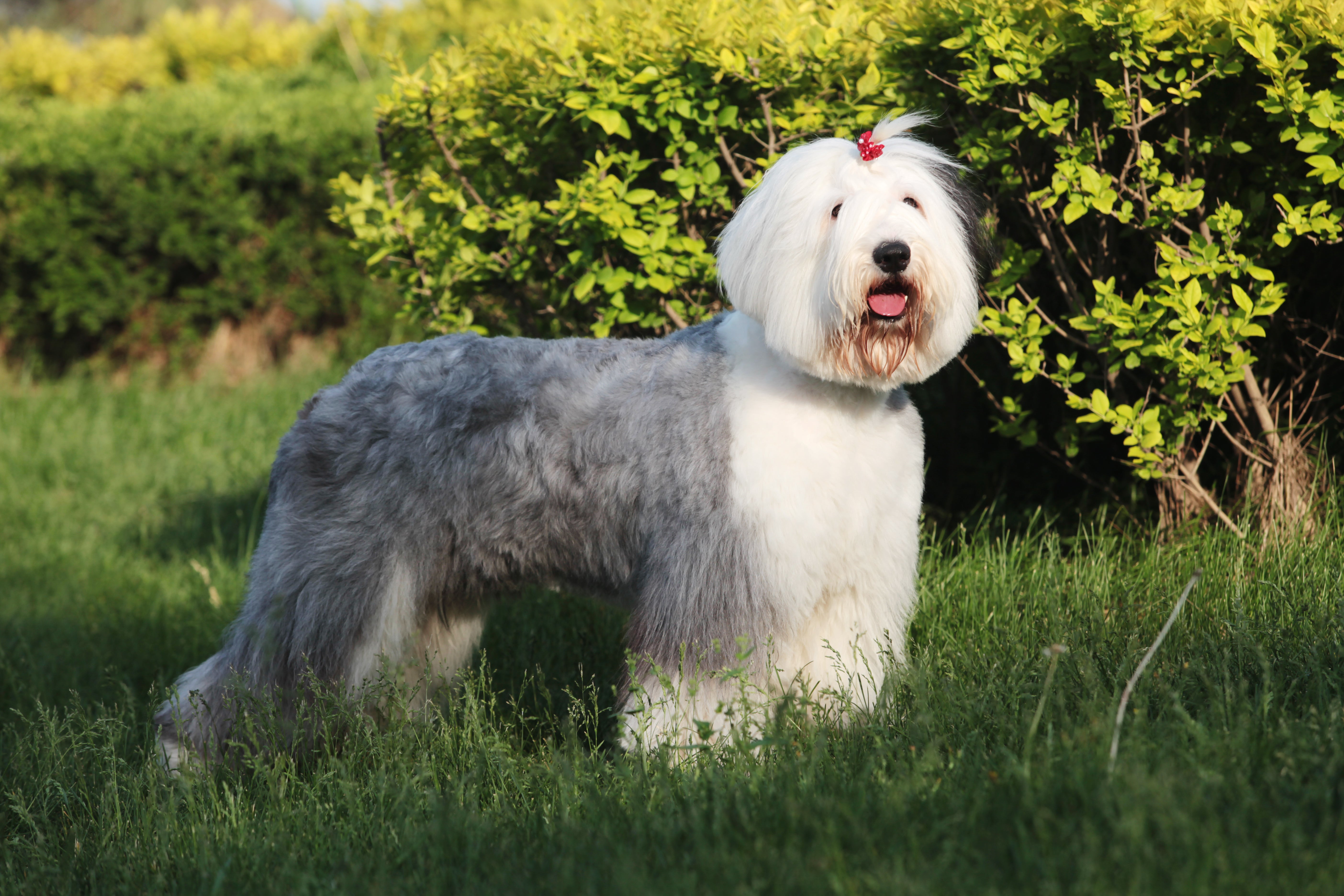Old English Sheepdog
Old English Sheepdogs are square-shaped, thick-set, and surprisingly agile for their large size. Their bodies are broader at their rump than shoulders, giving them a signature springy, bear-like gait. Their eyes, when visible beneath their distinctive coat, are dark brown, blue, or one of each. They are intelligent, watchful, and great with children.
Breed characteristics carousel
Learn More
Need to Know
- Suitable for experienced owners
- Extra training required
- Need to be aware of potential health issues
- Enjoys vigorous walks
- Can be left alone occasionally with training
- Large dog
- Some drool
- Requires frequent grooming
- Quiet dog
- Barks and alerts to visitors/anything unusual
- Generally friendly with other dogs
- Gets along with other pets with training
- May need additional supervision to live with children
- Needs a large yard, either in suburban or rural areas
- AKC Registered Breed

Personality
Old English Sheepdogs are jolly giants who are intelligent, loving, and super-friendly. They thrive on human companionship and are well-mannered dogs that make excellent family pets.
Once used to drive cattle (not herd sheep as you might think!), they are good watchdogs with a protective yet gentle nature. They look out for their families, especially children, who they treat as part of their herd. There is a lot of energy in such a large dog, so they need plenty of mental and physical stimulation to get the wiggles out. If not, they can become stubborn and noisy.
Old English Sheepdogs have been used for centuries to drive cattle, not sheep, as their name implies. They are descended from Scotland, Russia, and mainland Europe, not England. Despite the misnomer, they were shorn with the sheep and their hair would be used for clothing, too. They first appeared in America in the very early 20th century.
The ideal owners of an Old English Sheepdog will enjoy long walks, playing, and spending time with their pup. They will need to have ample time to devote to lengthy grooming sessions as the signature large, fluffy coat requires maintenance.
Though large, Old English Sheepdogs need an ample amount of daily exercise. They will need an outlet for all of their energy and an owner who can play with them, matching their speed. Old English Sheepdogs love being with their owners, so any joint physical activity such as long walks, hikes, or running will be appreciated.
Large dogs need large areas for space. Developed to live and work in the country, Old English Sheepdogs love rural areas where they can roam and be free. If in the suburbs, a large yard and daily long walks will be needed. Bonus points if you have an outdoor shower for grooming.
While their shaggy appearance is part of what makes them so adorable, it can also be a tedious task to groom them properly. Old English Sheepdogs shed their coats often and it’s imperative that owners spend the time to ensure that the two coats don’t mat together. Owners should brush the entire dog down to the skin frequently. Trimming can help. Their paws will also need to be checked as stray items can end up getting tangled in their hair and become painful.
The Old English Sheepdog breed is highly intelligent—once they learn something, they do not forget it. However, they can easily get bored with too much repetition in training, so it’s imperative that owners make training fun and rewarding, and switch it up frequently for Old English Sheepdog puppies and dogs.
The Old English Sheepdog breed makes an excellent family pet. They are loving, loyal, and fiercely protective. However, they are large and enjoy herding smaller animals, including young children.
The cost of an Old English Sheepdog from a breeder is significantly more than the cost of adopting one from a local shelter or rescue. The adoption fee usually covers additional items such as spaying or neutering, vaccines, and microchipping.

Learn more about feeding and caring for your Old English Sheepdog on Purina.
Did You Know?
- Old English Sheepdogs used to be quite the status symbol during the American Industrial period. During this time, the five richest families in the world (the Vanderbilts, the Guggenheims, the Morgans, the Goulds, and the Harrisons) all owned one, as did m
- Paul McCartney is a well-known Old English Sheepdog lover and owner. One even appeared on the cover of an album.
